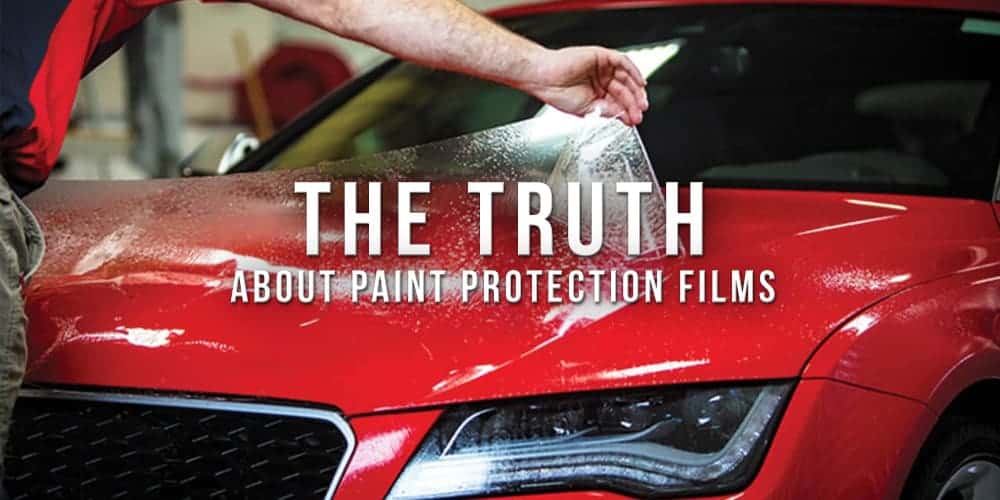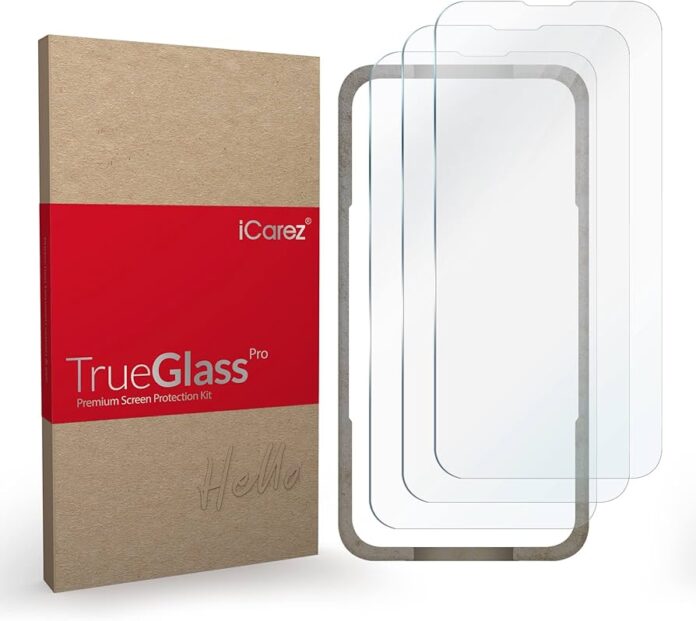A screen protector can often hide minor scratches on a phone screen. It acts as a barrier, making scratches less noticeable.
Keeping your smartphone in pristine condition is a common concern for many users, as daily use can inevitably lead to wear and tear. A scratched screen is not only unsightly but can also affect the usability of your device. Applying a screen protector is a smart and simple solution for concealing those imperfections.
These thin adhesive films or tempered glass layers serve as a protective shield, potentially obscuring light scratches and marks that accumulate over time. For visible preservation and improved aesthetics, a screen protector offers a dual function; it not only protects from future damage but also enhances the current appearance of the device’s display. Investing in a quality screen protector might save you from the annoyance of looking at scratches and could extend the life of your mobile screen.

Credit: avalonking.com
The Necessity Of Screen Protectors
Your mobile device faces daily hazards. From keys in a pocket to accidental drops, screens endure much abuse. Protecting your device’s display becomes not just a choice but a necessity. A screen protector can be the shield that keeps your screen pristine and adds a layer of defense against scratches and cracks. But can a simple film or glass protector hide existing screen damage? Let’s dive into understanding the impact of damage and the role protectors play.
Types Of Screen Damage
Different hazards inflict various kinds of damage:
- Scratches – Caused by contact with sharp objects.
- Scuffs – Surface wear from rubbing against materials.
- Cracks – Impact from drops or pressure.
Each type affects visibility and usability. While a screen protector can mask minor scratches, deeper damage like cracks might still be noticeable.
Role Of Screen Protectors
Screen protectors serve as the first line of defense. They come in two main types:
| Type | Description | Benefits |
|---|---|---|
| Plastic Film | Thin, flexible layer | Lightweight, less noticeable |
| Tempered Glass | Sturdy, rigid sheet | Feels like the original screen, offers better protection |
While tempered glass excels in preventing damage, plastic film protectors can reduce the visibility of existing light scratches. Nonetheless, for scratches that penetrate the top layer of the screen, a protector offers minimal concealment. To maintain a device’s functionality and appearance, apply a screen protector right from the start.
Screen Protector Basics
Mobile devices are vulnerable to scratches that can mar their appearance and reduce visibility. A screen protector can be a simple solution to this problem. Not only do they offer protection, but they also have the potential to conceal existing imperfections on your device’s screen. Let’s explore the essentials of screen protectors.
Materials Used In Screen Protectors
Screen protectors come in different materials, each with unique benefits. Tempered glass offers durable protection and clarity. Polyethylene terephthalate (PET) is a plastic that provides a basic defense against scratches. Another type, Thermoplastic polyurethane (TPU), is flexible and absorbs impact.
How Screen Protectors Attach
Attaching a screen protector properly ensures maximum protection. Most use an adhesive to stick to the screen. Some come with a silicone adhesive layer that clings without leaving residue. Certain glass protectors use a static cling.
Here’s a brief overview of the attachment methods:
- Adhesive: Peel the backing and align with the device.
- Silicone Layer: Easy application with no sticky residue.
- Static Cling: Uses the power of static for attachment.
Observations On Scratch Concealment
Will a screen protector hide scratches on your beloved device? The answer isn’t always straightforward. It depends on the scratch’s severity and the protector’s quality. Let’s explore how these thin shields can help make scratches less noticeable.
Light Vs. Deep Scratches
Screen protectors excel at hiding light scratches. These shallow imperfections often vanish beneath a quality screen protector. The adhesive fills in the gaps, creating a smooth surface that looks nearly flawless.
Deep scratches, on the other hand, present more of a challenge. While some screen protectors might make them less visible, they won’t disappear entirely. The type of protector matters too; tempered glass ones are usually more effective than plastic ones.
Visual Clarity After Application
Once applied, a screen protector does more than just hide scratches. It restores visual clarity to the display. The protector’s clear, smooth surface allows colors and text to pop again, as if the scratches were never there. Remember, the application must be bubble-free for the best results.
- Improves display appearance
- Minimizes scratch visibility
- Enhances touch sensitivity
Installing The Screen Protector
Curious about whether a screen protector can mask those pesky scratches on your device? The answer lies in the installation. A perfectly applied screen protector not only guards against future damage but can also make current scratches less noticeable. To achieve this magic trick, proper installation is key. Follow these steps and say goodbye to those annoying blemishes on your screen.
Preparation Steps
- Clean your screen with a microfiber cloth to eliminate any dust and oils.
- Place your device on a flat, stable surface in a dust-free environment.
- Wash your hands to prevent fingerprints and additional dirt on the screen.
- Have adhesive tape at hand to pick off any lingering dust after cleaning.
Best Practices For Reducing Air Bubbles
Nothing ruins the look of a screen protector more than air bubbles. They can make even the most premium screen look cheap. To ensure a smooth, bubble-free application, follow these best practices:
- Peel the protector’s backing slowly to minimize dust collecting on the adhesive side.
- Align the protector with the screen’s edges and speaker, camera, and button cutouts.
- Gently place the protector onto the screen without pressing down.
- Once aligned, press from the center outward to expel any trapped air.
- Use a credit card or squeegee wrapped in a microfiber cloth to push out edges.
- If bubbles remain, lift the protector slightly near the bubble and flatten again.
A flawless protector application not only hides scratches but also retains the functionality and touch sensitivity of your device. Remember, the key to hiding those scratches is the precision of your installation. Take your time, follow these steps, and enjoy a scratch-free view.
Long-term Effects And Protection
Scratches on your device can be unsightly and may affect its performance. Using screen protectors provides a barrier against daily wear and tear. This approach promises lasting benefits for both the device’s aesthetics and functionality.
Durability Of Screen Protectors
Over time, smartphones endure stress from various sources like drops or keys in a pocket. A high-quality screen protector is a strong line of defense. It takes the brunt of everyday hazards, often absorbing scratches that would otherwise mark your device’s actual screen.
- Tempered glass protectors resist scratches better than plastic ones.
- Protectors with oleophobic coatings can also reduce fingerprints.
- Replacing a screen protector is simple and maintains the screen’s pristine look.
Impact On Resale Value
When you decide to sell your device, buyers examine its condition closely. A screen free from scratches commands a higher price. Screen protectors can, therefore, offer not only physical protection but also financial benefits.
| Screen Condition | Without Protector | With Protector |
|---|---|---|
| Scratch-Free | Lower Chance | Higher Chance |
| Resale Value | Lower | Higher |
Keeping the original screen intact means maximizing your device’s resale value. It’s a small investment that maintains your screen’s look and operation, while also safeguarding its worth in the long run.

Credit: www.vive-houston.com
Alternatives And Complementary Solutions
Exploring Alternatives and Complementary Solutions can often lead to the best outcomes when dealing with phone screen scratches. While screen protectors might mask minor abrasions, deeper scratches call for additional measures. Various Screen Repair Options exist, besides the benefits of Combining Protectors with Cases.
Screen Repair Options
Tackling the core issue involves screen repair. Consider the following options:
- Professional Repair Services: Specialists can replace or repair the glass, making the screen look new.
- DIY Repair Kits: These provide the tools and instructions to fix minor scratches at home.
- Manufacturer Services: Some OEMs offer repair programs for their devices, often at a cost.
Combining Protectors With Cases
For optimal protection, merging both a screen protector and a case is smart. Here’s why:
| Protector | Case | Benefits When Combined |
|---|---|---|
| Shields Against Scratches | Provides Shock Absorption | Reduces Risk of Future Damage |
| Minimizes Dust and Smudges | Covers Edges and Corners | Enhances Overall Durability |
In addition to a protector and case, clean your screen regularly. This practice maintains clarity and touch sensitivity. With these measures in place, rest assured that your device’s screen stays in top-notch condition.

Credit: www.amazon.com
Frequently Asked Questions For Will A Screen Protector Hide Scratches
Does A Screen Protector Hide Existing Scratches?
A screen protector can minimize the appearance of light scratches, making them less visible. For deeper scratches, its effectiveness is limited.
How Do You Hide Scratches On Your Screen?
Apply a small amount of toothpaste on a cotton swab to buff out the scratch. Then, gently wipe the area with a damp, soft cloth to clean. For deep scratches, screen protectors or professional repair may be necessary.
Do Screen Protectors Stop Scratches?
Screen protectors are designed to shield screens from scratches. Their effectiveness varies by material quality, but most provide a reliable defense against common abrasions.
Will Screen Protector Hide Cracks?
A screen protector may conceal minor scratches but larger cracks will still be visible. For best aesthetics and functionality, consider replacing the damaged screen.
Conclusion
To sum up, screen protectors can be effective in concealing minor scratches and preventing further damage. Choosing the right protector enhances your screen’s look and longevity. It’s a smart move for any device user seeking to maintain a pristine display.
Remember to consider protector quality for the best results.





